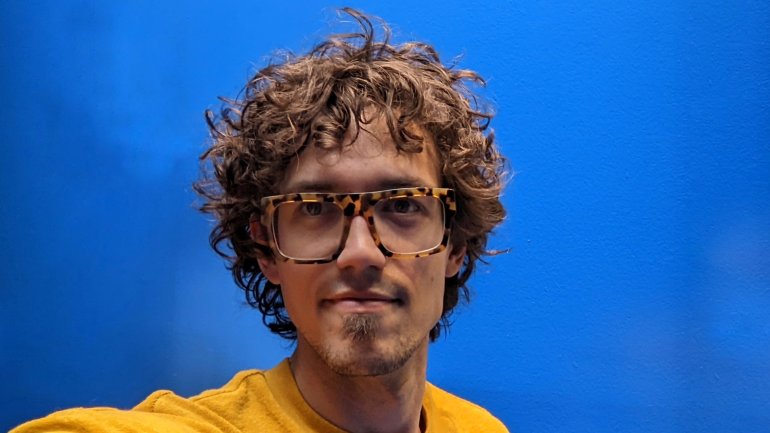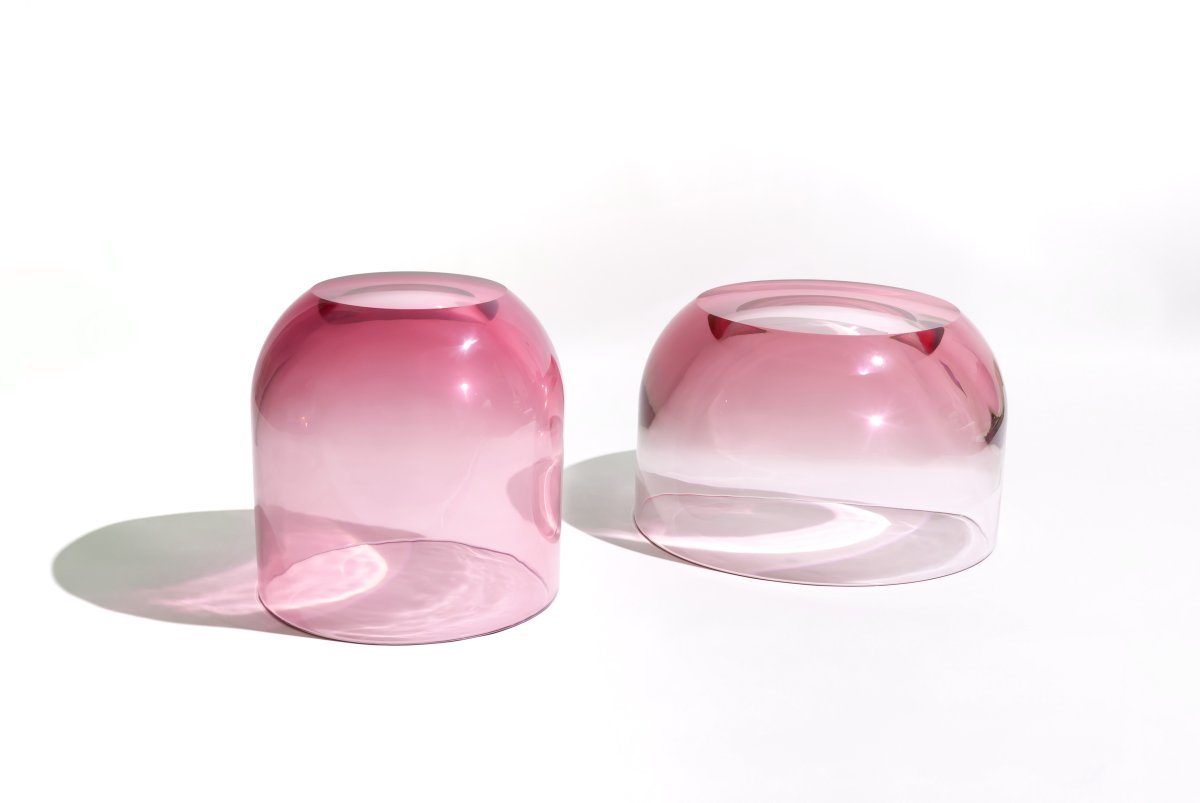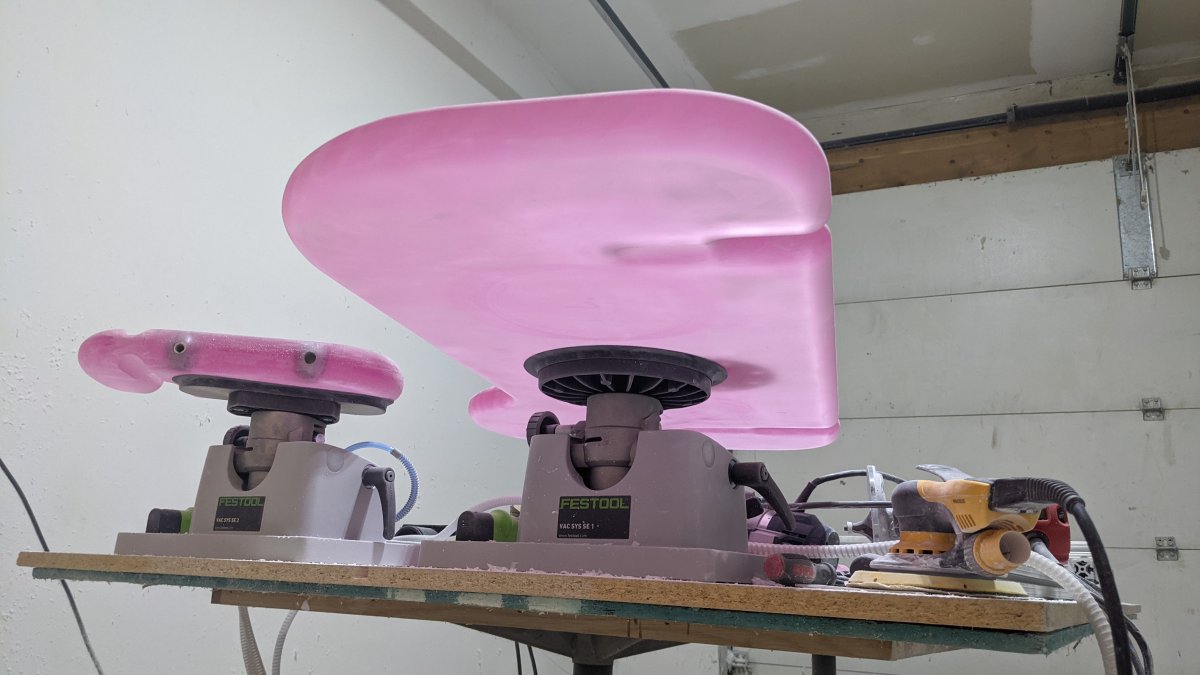The Queue: Ian Alistair Cochran
The Queue: Ian Alistair Cochran
Ian Alistair Cochran tames mercurial resin into bold, shiny, gem-hued furniture.
Often associated with disposability, kitsch, overconsumption, and negative environmental impact, plastic is an unlikely material for fine craft. But Ian Alistair Cochran, who lives and works in Chicago, transforms synthetic resins into slick, transparent furniture and decorative objects that cast strange shadows and light, elevating the medium into something sublime. Trained as a sculptor in a variety of traditional craft mediums, he found himself drawn to resin for its endless possibilities and its translucent properties. Colorless resin can be dyed any hue, and after being cast into molds, resin can be planed, shaved, and carved into form. Cochran embraces these material possibilities, crafting resin furniture that appears different from every angle. “I want to highlight the ways resin can bend light and alter the surroundings, kind of be there and not there,” he says. Claire Voon wrote about his work and process in “Like Candy” in the Winter 2024 issue of American Craft.
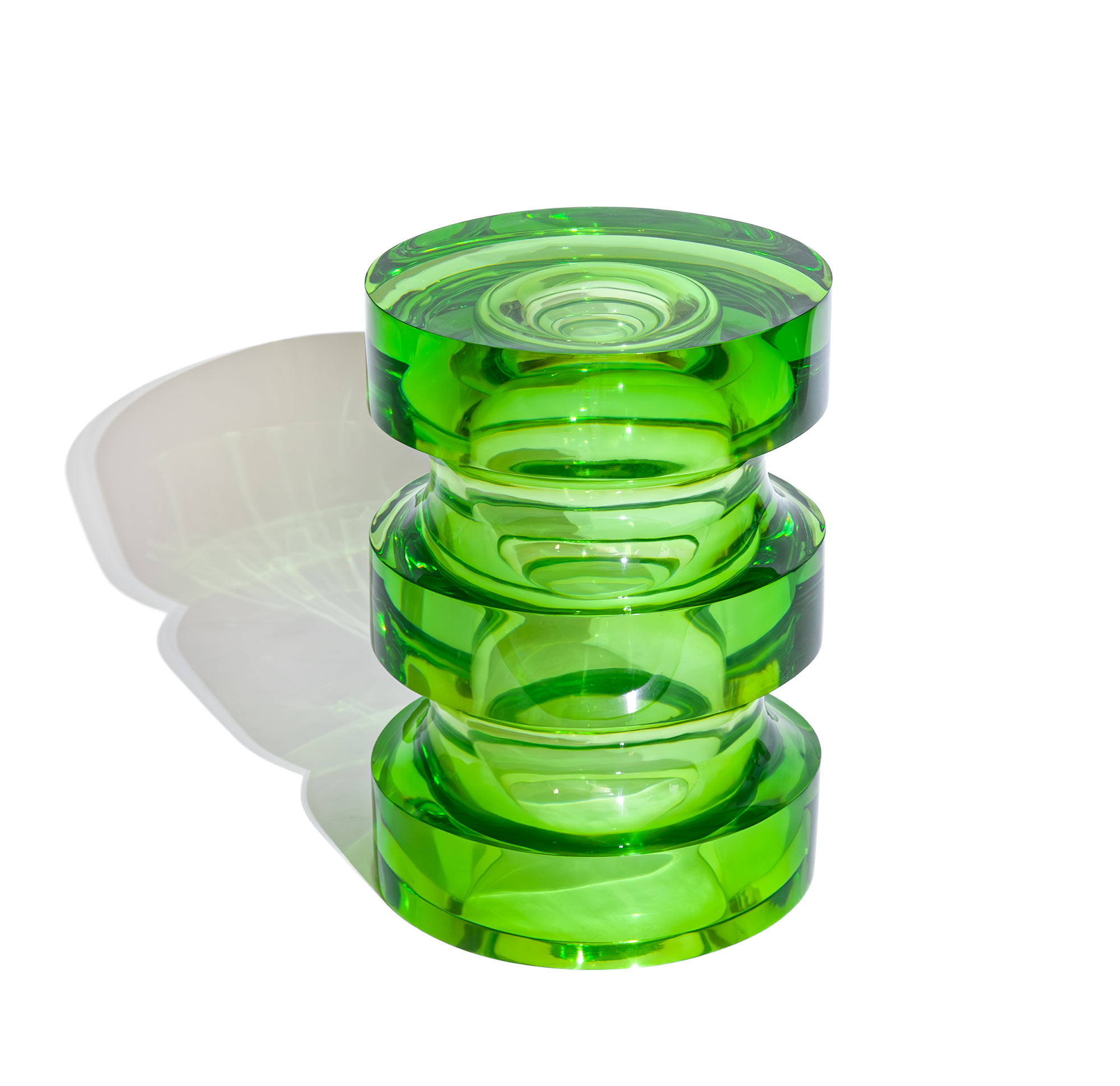
How do you describe your work or practice in 50 words or less?
My current work, like my previous work in fine art, is about perception. My design work is specifically about material perception and getting the viewer to see material differently because of how I have transformed it.
What is your design process when you start a new project?
I never know where my imagination will go, so I start by using the constraints of a prompt or the materials involved to confine the exploration. There is usually something worth exploring that I feel has fresh territory to go into. I like to subvert the normal use of materials, so that’s often what I push for.
What are you working on right now?
I’m currently experimenting with a lot of different material techniques. I have been designing ideas for a rawer surface made of metal, which would stand in stark contrast to my polished candy-like resin works. The language of material and play will still be a part of this new work, however.
You mentioned that you’re considering making resin light fixtures. For you, how is designing lighting different from designing furniture and objects?
Lighting can often be closer to art than it is a design object. We’re so drawn to light as humans that adding this element to a piece is a big responsibility. If used well, it can be really breathtaking.
What are your favorite tools for working with resin?
I have these vacuum suction tables called work holds. They essentially hold the resin pieces up above the table surface and allow all the finishing processes, even polishing, while being gentle on the material’s surface.
If you could have work from any contemporary craft artist for your home or studio, whose would it be and why?
My favorite artist is Anish Kapoor. I think that so many of even the small objects his studio produces are mind-melting. I don’t understand even to this day how some of them are made. They elevate the physical materials to another level.
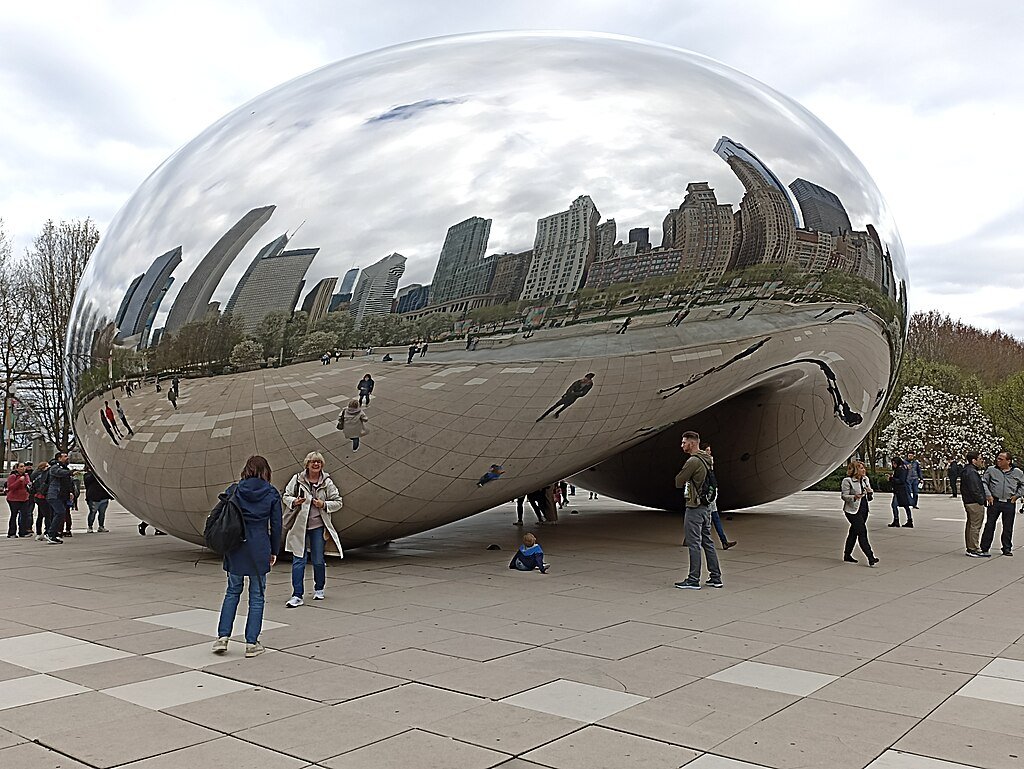
Anish Kapoor’s Cloud Gate inspires countless visitors to Chicago’s Millennium Park to photograph their distorted reflection in its mirrored surface. Photo by MorenaClara, courtesy of Wikimedia Commons.
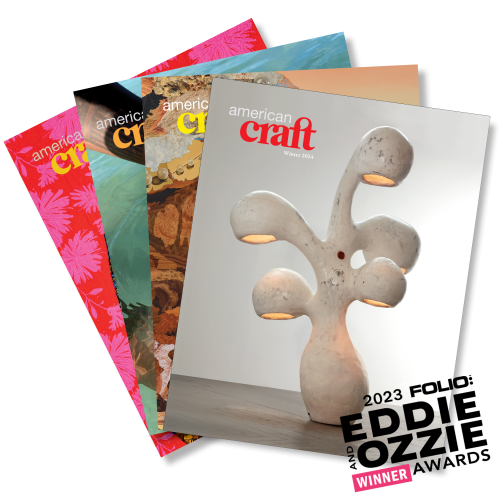
Want to learn more about all of the craft artists you love?
Become an ACC member to receive a complimentary subscription to American Craft magazine and gain complimentary access to our shows, travel deals, and more!


